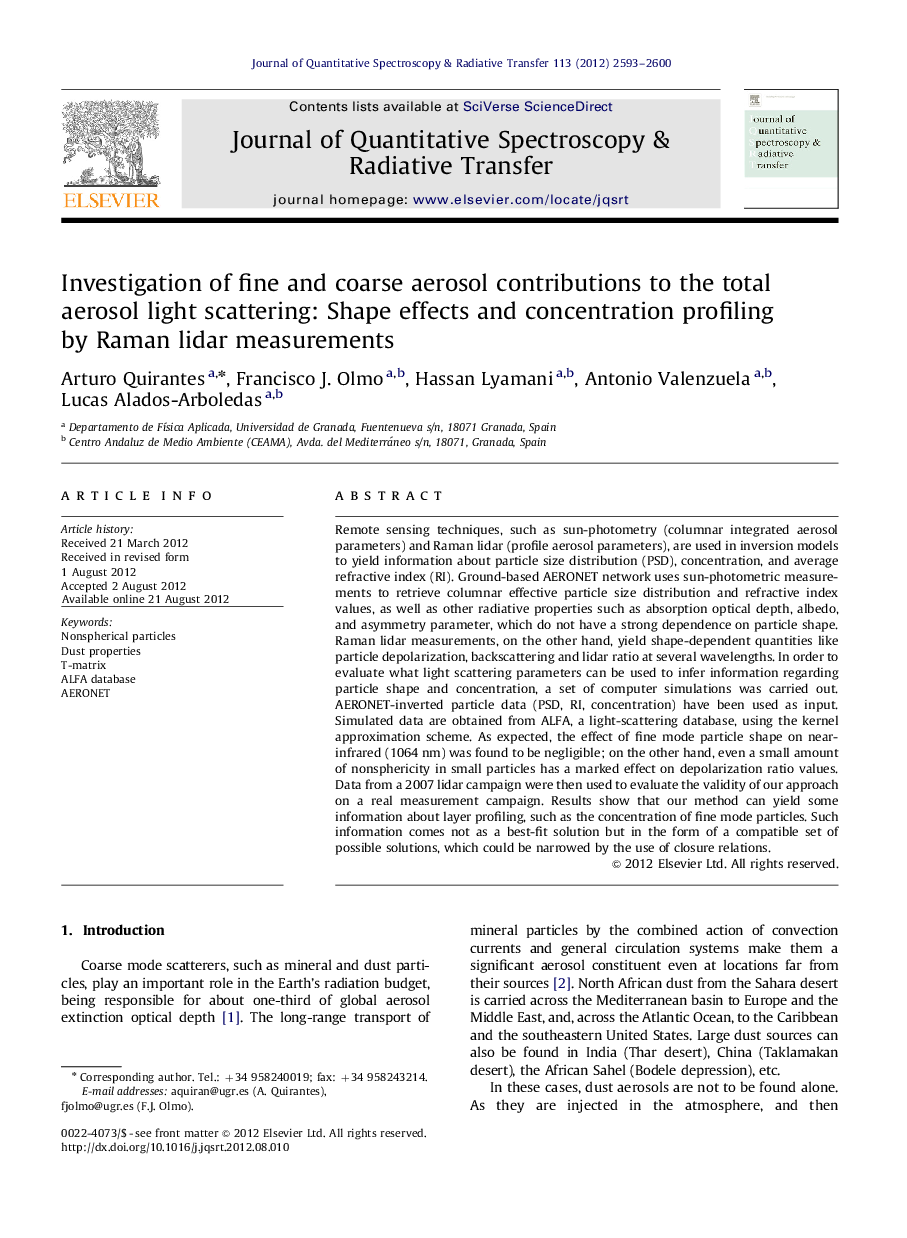| کد مقاله | کد نشریه | سال انتشار | مقاله انگلیسی | نسخه تمام متن |
|---|---|---|---|---|
| 5429124 | 1397335 | 2012 | 8 صفحه PDF | دانلود رایگان |

Remote sensing techniques, such as sun-photometry (columnar integrated aerosol parameters) and Raman lidar (profile aerosol parameters), are used in inversion models to yield information about particle size distribution (PSD), concentration, and average refractive index (RI). Ground-based AERONET network uses sun-photometric measurements to retrieve columnar effective particle size distribution and refractive index values, as well as other radiative properties such as absorption optical depth, albedo, and asymmetry parameter, which do not have a strong dependence on particle shape. Raman lidar measurements, on the other hand, yield shape-dependent quantities like particle depolarization, backscattering and lidar ratio at several wavelengths. In order to evaluate what light scattering parameters can be used to infer information regarding particle shape and concentration, a set of computer simulations was carried out. AERONET-inverted particle data (PSD, RI, concentration) have been used as input. Simulated data are obtained from ALFA, a light-scattering database, using the kernel approximation scheme. As expected, the effect of fine mode particle shape on near-infrared (1064Â nm) was found to be negligible; on the other hand, even a small amount of nonsphericity in small particles has a marked effect on depolarization ratio values. Data from a 2007 lidar campaign were then used to evaluate the validity of our approach on a real measurement campaign. Results show that our method can yield some information about layer profiling, such as the concentration of fine mode particles. Such information comes not as a best-fit solution but in the form of a compatible set of possible solutions, which could be narrowed by the use of closure relations.
⺠We simulate bimodal particle size distribution in atmospheric aerosols. ⺠Lidar data are used from a campaign to test our approach. ⺠Backscattering can be used to obtain particle concentration by layer. ⺠ALFA, a light-scattering database, has been put to test.
Journal: Journal of Quantitative Spectroscopy and Radiative Transfer - Volume 113, Issue 18, December 2012, Pages 2593-2600